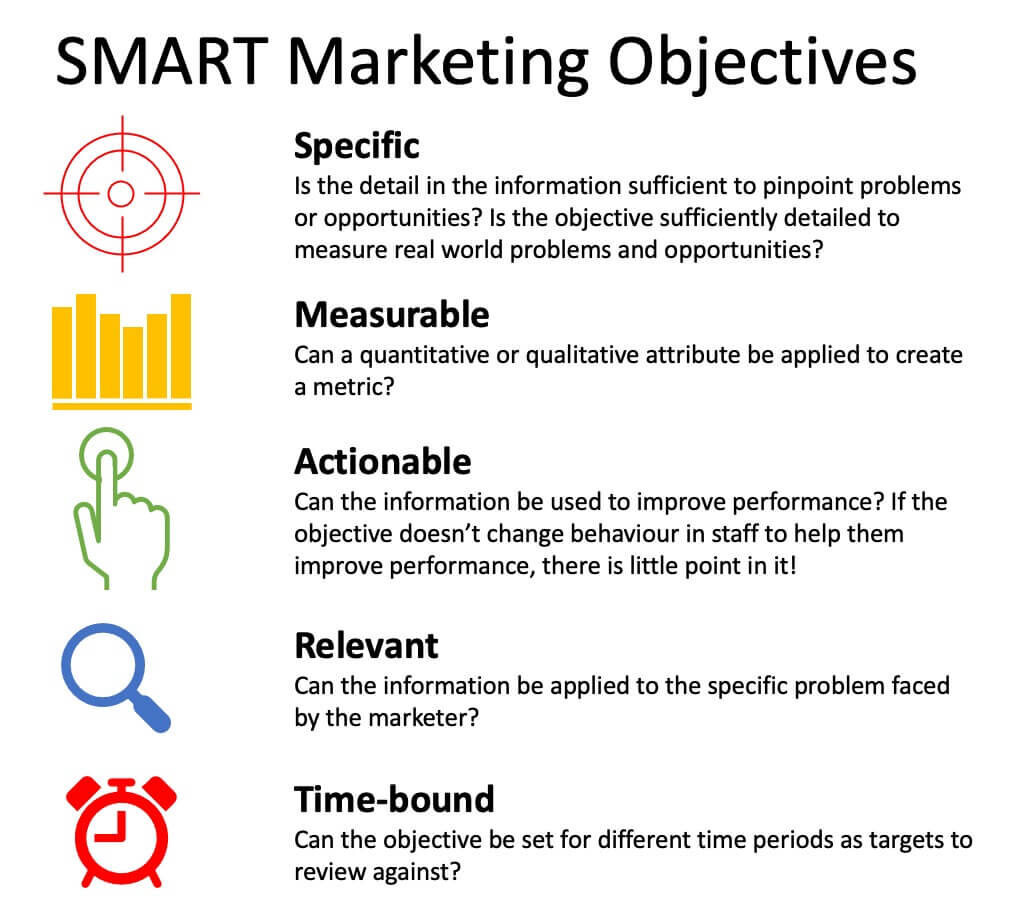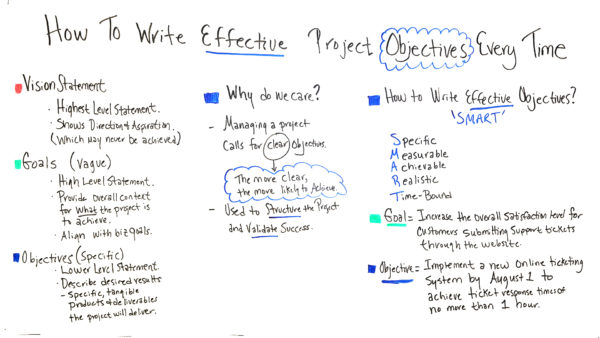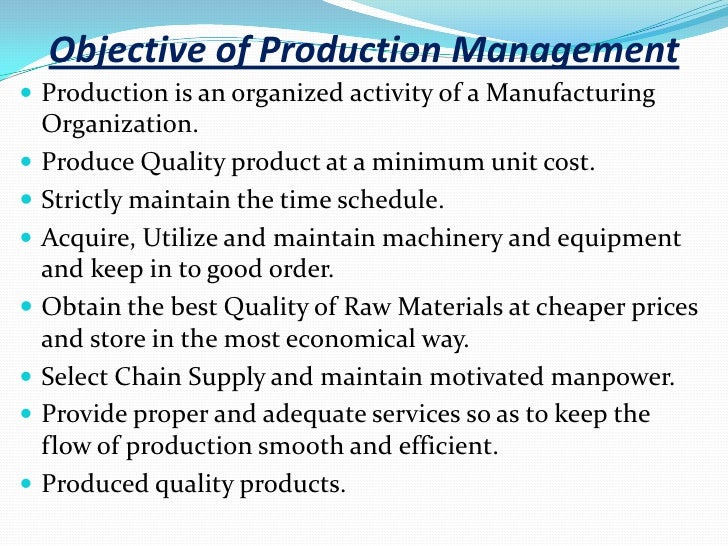- What Are Quality Objectives
- Quality Objectives Examples Manufacturing Process
- Quality Objectives Examples Manufacturing Companies
- Examples Of Quality Objectives Manufacturing
Manufacturing Technician Resume Objective. A Manufacturing Technician uses precision machinery to create products or parts. Knowledge of Computer Automated Drafting (CAD) programs, computer controlled machines, and other technical ability is important to a Manufacturing Technician.
Ensure conformity of the quality management system. Continually improve the effectiveness of the quality management system. In this paper first two Quality Objectives of the Organization are studied, also the product rejections/reworks are studied with reference to measurement, analysis and improvement. Improving inbound and outbound logistics where this impacts quality. For example, an ecommerce firm that views late deliveries as damaging to the customer experience. Monitor and report late shipments by delivery partner and escalate poor performance. Target: reduce late deliveries to 3% or less.
Author's Note: This article reviews common practices for, and the positive results of, establishing measurable quality objectives for ISO 9001 and other quality management systems. The author suggests a practical model for identifying and documenting objectives to drive the continual improvement of management systems. This article also illustrates ineffectiveness that results from vague and poorly defined quality objectives, and demonstrates how well-structured and documented quality objectives can lead an organization to a more efficient quality management system that increases customer satisfaction. An example of a Quality Objectives Matrix (shown in the paper) presents a useful method for documenting and managing various aspects of quality management systems. The paper will be helpful to those organizations that have not yet formally documented their quality objectives and for those that are interested in improving the effectiveness of their quality management systems and the performance of their businesses.
I may be overly sensitive to vague and uncertain goals because I've had several bad experiences with such 'objectives' in the past.
Introduction
Through my consulting and auditing career I have been collecting 'the best and the worst' samples of management systems and QMS documentation. Among those collectibles, here are a few examples of the worst-documented quality objectives that I have seen thus far:
What Are Quality Objectives
- '...to deliver exceptional values through trust of the people around the world'
- '...conduct business better, simpler, faster'
- '...quality is paramount and all our employees are committed to quality.'

Regretfully, these 'quality objectives' are straight from the documentation of some of the organizations and professionals with whom I have worked. How companies could measure performance against such 'objectives' is anybody's guess. I may be overly sensitive to vague and uncertain goals because I've had several bad experiences with such 'objectives' in the past.
When I grew up in the former Soviet Union, day and night Soviet propaganda tried to fool us. They would say that everything was getting better and better, while we all knew that it was not true. Since then, I have been unable to figure out how one could say that something is getting better or worse--or even exists--when there is nothing to compare this 'something' with.

The interesting 'objectives' quoted above resemble dreams, not objectives. There is nothing wrong with having dreams. Often measurable accomplishments start from dreams. These dreams might include making a computer user interface more intuitive, engineering a car that requires less fuel, automating documentation systems, etc. The problem is that many organizations stop at dreams and don't make quantifiable progress that is significant for employees, stakeholders and other parties.
If we agree that starting from a dream is a good beginning, let's see how we can translate a dream into a measurable objective. Element 5.2 of the ISO 9001 standards, among others, requires '...enhancing customer satisfaction..'. Committing to such a program in the QMS documentation is a good idea because the standard requires it and because—obviously—satisfied customers are the customers that continue paying the bills. However, it's not good enough to simply state this dream within the quality objectives documentation because 'customer satisfaction' cannot be accurately measured. I worked with companies, for example, that established their customer satisfaction targets to 87, 97 or whatever percent. What those percentages meant—my apologies—I have no idea. Simply speaking, even collecting satisfaction surveys can be far too subjective. If a customer marks 87 today, she can mark 76 tomorrow.
Fortunately, there is an alternative way to translate customer satisfaction objectives into 'measurable specifics.' Since we all are 'professional' customers we can confidently say that to make a customer happy, one needs very little. Simply give your customers:
- What they asked for,
- When they want, and
- Give it to them for the price they believe is honest.
These qualifications are more specific and may in summary represent a meaningful base for measuring customer satisfaction.
Quantifying Quality Objectives
If we agree that the three objectives above leading to customer satisfaction are a good start, let's see how we can quantify them.
'Give them what they asked for' may be quantified by identifying the number of product returns with the reason for return labeled as 'wrong part' or anything similar.
'When they want it' may be measured through variance between actual delivery date and the target, or requested delivery date.
'The price they believe is honest' may be expressed as variance between our price and the average of compatible products. This data can be obtained through periodic competitive price surveys.
Responsibility: Anybody Could Have Done It...
Now that we have developed a list of quality objectives and know how to measure them, we should consider perhaps the most important attribute of any task: accountability. Remember the story about those three guys, Everybody, Anybody and Nobody? When hell broke loose and Everybody knew what needed to be done, Anybody could have done it, but Nobody did.
The moral of the story is simple: if you need to get something done, make a particular person, not a committee or a function responsible for it. When something needs to be accomplished it shouldn't be handed over to 'collective responsibility.' Since every company wants to achieve its objectives and goals, every company can start by assigning specific responsibilities to specific employees, depending on their expertise and authority within the organization. For example, the most appropriate person to oversee and report delivery accuracy is most likely the Shipping Manager. The most appropriate person to report on customer retention is the Customer Service Manager; the most appropriate person to report on pricing would be the VP of Marketing, etc.
Review Frequencies
Now that we have identified our objectives and associated responsibilities, we need to define practical frequencies for the review of each objective. These reviews, or performance appraisals, are usually conducted by management or delegated to lower tactical forums. Top level management reviews are conducted monthly, quarterly or annually, while tactical reviews on departmental levels may be conducted daily, weekly, monthly or quarterly.
Setting Practical Quality Goals
There is a saying: 'Be careful what you wish for — you just may get it!' If this is true and we wished we could deliver our products to our customers all the time and every time it could come true! Unfortunately, this wisdom is not for everybody. Some time ago I worked with a company that took an opposite approach. When I interviewed the Order Processing Manager and examined their records, I learned that their delivery accuracy was somewhere around 60 percent with delays of up to 30 days. 'What are your goals in improving delivery?' I asked. 'Reach 80 percent,' the manager replied. 'How often do your customers want shipments on time?' I asked. 'All the time,' she replied.
'Why is your goal not 100 percent then?' I asked. 'It will de-motivate employees to miss the goal most of the time,' she answered.
It was very thoughtful of the manager and the entire organization to be concerned with their employees' morale and motivation but contradictory to the company's policy to 'meet or exceed customer expectations.' Do we stop aiming at the center of the target when we're shooting darts even if we do not hit the center every time? Sometimes I wonder why some organizations apply different standards to their employers, service providers and suppliers than to themselves. Wouldn't it be fair to try to be 100 percent on time when we deliver products when we ourselves expect our employer to be on time with our monthly or bimonthly paychecks?
Afterward
By using the simple approaches addressed in this paper, you may develop a powerful quality management tool that will allow your business to assess its performance characteristics based on data and not feelings. As a matter of fact, my most successful clients developed and started using full-blown Balanced Scorecards to manage their quality, business and other objectives. Such scorecards may include financial, quality, environmental, process realization and other business systems.
As an old Chinese saying goes, a three-year journey starts from the first step. I hope this information helps other professionals realize how measurable objectives, their target values and their periodic reviews will lead their companies to achieve their business goals.
Aim high, do not be afraid of missing targets (sometimes) and good luck in reaching your measurable quality objectives and goals using the Quality Objectives Matrix below. To learn more about other management system tools and documentation, visit our Website at http://www.quality-works.com.
Related Posts
Quality
Quality assurance metrics are quality objectives. They mean the same thing. ISO 9001 standard requires that you establish quality objectives.
Quality Objectives Must Be
- measurable
- Relate to your business products
- documented
- reviewed
- tracked
StreamLiner is Project Management software that drives your team's Lean and Continuous Improvement activities.
StreamLiner
Quality Objectives Documentation
Your quality objective documentation should
- Tell specifically what you are measuring
- State how you collect the data.
- The frequency of the measurement
- Provide targeted goals
- State who is responsible for gathering the data
- State how they are recorded.
- State when they are reviewed
Quality Objective examples
Examples of Quality Objectives:
- Percent yield for a product
- Cycle time for a product.
- CpK for a given process characteristic
- CpK for a product characteristic
- Number of product returns
- Product returns parts per million.
- Corrective action cycle time
- Number of open corrective actions
- Number of audit action items.
- Sales Volume
- Net profit
This Data Analysis Video teaches you the basic tools for understanding, summarizing, and making future predictions with your collected data. Includes MS Excel templates.
Quality Objectives Examples Manufacturing Process
Data Analysis Video
- inventory turns
- Number of key customers.
- installation time
- Number of preventive actions
- Quality Costs.
- Number of supplier rejects
- Key supplier lead times
- Number of data entry errors
- Rework costs.
- Defect costs.
- Number of processes out of control
Determining Quality Assurance Metrics
Select quality assurance metrics based on your business needs. The metrics need to make sense to your organization.
When determining metrics, select metrics that are global to the entire operation. Then select metrics that support those global metrics. Break the metrics down by department, process, organization function or product.

The metrics have to be agreed upon. A management committee determines the metrics. Senior managment communicates these metrics through out the company.
All employees should be able to identify the metrics. All employees should know how their work affect the metrics.
Make metric targets reasonable and challenging. Management provides the plans to achieve the targets. During the quality management review, review the metrics and document the plans to achieve the targets.
Some companies put the quality objectives within the quality assurance manual. I do not recommend this. Your customers do not need to see your quality objectives. In most cases these are confidential.
8D Manager Software with 8D, 9D, 5Y and 4M report generator. Your corrective action software for managing, measuring, and reporting issues.
8D Manager
More Info
ISO 9001 Overview and a Brief History of the Standard
An ISO 9001 overview and history of the standard. Discusses prior quality assurance management standards and the evolution of ISO 9001.
An ISO 9001 Definition and Information
Looking for ISO 9001 Definition? Review to see information and key elements. Quality Assurance Solutions will help you achieve certification.
Need ISO 9001 Auditor to Audit your Quality Assurance System?
Selecting a competent ISO 9001 Auditor is critical to registration. Assure your auditor fits well with your company and your Quality Assurance systems.
ISO 9001 2015 procedures
ISO 9001 2015 procedures that you need to implement for ISO 9001:2015 certification.
List of ISO 9001 Registrar
Here is a list of ISO 9001 Registrar. This list includes all possible Registrars for ISO 9001, TS 16949 and AS 9100.
Discusses Quality Assurance form and Quality Records
A Quality Assurance form is a Quality Record. Did you know these are mandatory for ISO 9001 registration?
Discusses Quality Program Management Review Requirements
Learn how to conduct a Quality Program Management Review which is necessary for ISO 9001 Certification.
Document Revision Control. Implement ISO 9001
A guide for Document Revision Control System. A total document control system is important for your Quality Assurance program.
ISO 9001 Checklist Audit for ISO 9001:2015
Download Today. Start your ISO 9001:2015 implementation. Use our ISO 9001 Checklist for gap analysis, internal audits, and implementing ISO 9001:2015. $49.00. Satisfaction guaranteed.
Quality Manual Examples and Quality Manual Sample
Download Quality Manual examples, sample, and templates. Discusses the requirements for your ISO 9001 and other Quality Manuals.
Using ISO 9001 Logo rules
If your looking for an ISO 9001 logo, review this page first!
ISO 9001 2015 QMS Implementation Tips
Implementing ISO 9001 2015 QMS Key Tips and Help
Building an Efficient QMS
Build an Efficient QMS. Key items to consisder when your are the QMS Manager.
Process Approach and ISO 9001:2015
Learn the Process Approach for ISO 9001:2015
ISO 9001 and other QMS Survival Stories
Review and Contribute your ISO 9001 Survival Stories. Teach others on ISO Audit pitfalls and tne ISO 9001 definition.
9001 ISO Training, The key clauses in ISO 9001:2015
9001 ISO Training and the key clauses in ISO 9001:2015. Review these clause by clause concerns for your ISO 9001 QMS.
QA Manual ISO 9001 2015
Download Today. User our QA Manual ISO 9001:2015 template for your quality management system.
ISO-9001-2015-QMS-Kit
Download Today. Use our comprehensive ISO 9001 2015 QMS Kit to establish your Quality Management System and meet ISO 9001:2015 requirements.
Quality Assurance Solutions
 Robert Broughton
Robert Broughton(805) 419-3344
Quality Objectives Examples Manufacturing Companies

USA



